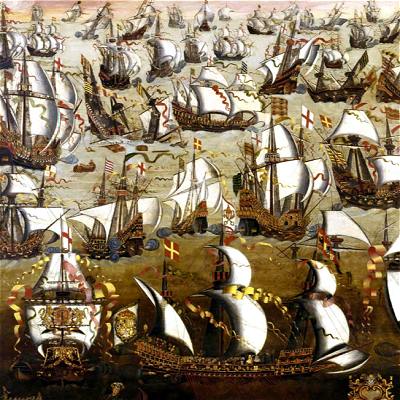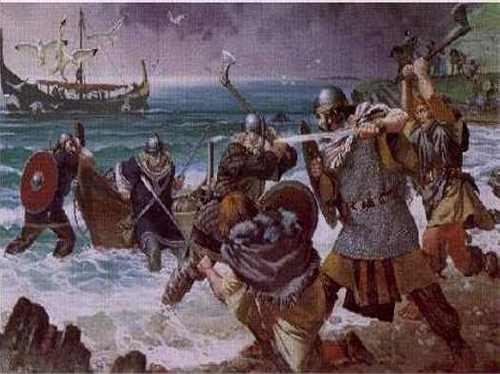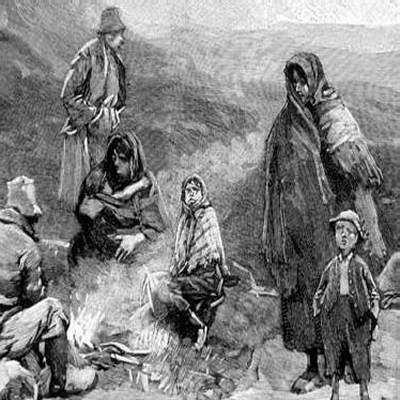The term 'Black Irish' has commonly been in
circulation among Irish emigrants and their
descendants for centuries. As a subject of
historical discussion the subject is almost
never referred to in Ireland. There are a
number of different claims as to the origin of
the term, none of which are possible to prove
or disprove.

'Black Irish' is often a description of
people of Irish origin who had dark features,
black hair, dark complexion and eyes.
A quick review of Irish history reveals that
the island was subject to a number of influxes
of foreign people. The Celts arrived on the
island about the year 500 B.C. Whether or not
this was an actual invasion or rather a more
gradual migration and assimilation of their
culture by the natives is open to conjecture,
but there is sufficient evidence to suggest
that this later explanation is more likely.
The next great influx came from Northern
Europe with Viking raids occurring as early
as 795 A.D. The defeat of the Vikings at the
Battle of Clontarf in the year 1014 by Brian
Boru marked the end of the struggle with the
invaders and saw the subsequent integration
of the Vikings into Irish society. The migrants
became 'Gaelicized' and formed septs (a kind
of clan) along Gaelic lines.
The Norman invasions of 1170 and 1172 led by
Strongbow saw yet another wave of immigrants
settle in the country, many of whom fiercely
resisted English dominance of the island in
the centuries that followed. The Plantation of
Ulster in the seventeenth century saw the
arrival of English and Scottish colonists in
Ulster after the 'Flight of the Earls'.
Each of these immigrant groups had their own
physical characteristics and all, with the
exception of the Ulster Planters, assimilated
to some degree into Irish society, many
claiming to be 'more Irish than the Irish
themselves!'

The Vikings were often referred to as the
'dark invaders' or 'black foreigners'. The
Gaelic word for foreigner is 'gall' and for
black (or dark) is 'dubh'. Many of the
invaders families took Gaelic names that
utilised these two descriptive words. The
name Doyle is in Irish 'O'Dubhghaill' which
literally means 'dark foreigner' which
reveals their heritage as an invading force
with dark intentions. The name Gallagher is
'O Gallchobhair' which translates as 'foreign
help'. The traditional image of Vikings is of
pale-skinned blond-haired invaders but their
description as 'dark foreigners' may lead us
to conclude that their memory in folklore
does not just depend on their physical
description.
The Normans were invited into Ireland by
Dermot McMurrough and were led by the famous
Strongbow. Normans are ultimately of French
origin where black haired people are not
uncommon. As with the Vikings these were
viewed as a people of 'dark intentions' who
ultimately colonised much of the Eastern
part of the country and several larger
towns. Many families however integrated
into Gaelic society and changed their Norman
name to Gaelic and then Anglo equivalents:
the Powers, Fitzgeralds, Devereuxs, Redmonds.
It is possible that the term 'Black Irish'
may have referred to some of these immigrant
groups as a way of distinguishing them from
the 'Gaels', the people of ultimately Celtic
origin.
Another theory of the origin of the term
'Black Irish' is that these people were
descendants of Spanish traders who settled in
Ireland and even descendants of the few
Spanish sailors who were washed up on the
west coast of Ireland after the disaster
that was the 'Spanish Armada' of 1588. It is
claimed that the Spanish married into Irish
society and created a new class of Irish who
were immediately recognisable by their dark
hair and complexion. There is little evidence
to support this theory and it is unlikely
that any significant number of Spanish soldiers
would have survived long in the war-torn place
that was sixteenth century Ireland. It is
striking though how this tale is very similar to
the ancient Irish legend of the Milesians who
settled in Ireland having travelled from Spain.
The theory that the 'Black Irish' are descendants
of any small foreign group that integrated with
the Irish and survived, is unlikely. It seems
more likely that 'Black Irish' is a descriptive
term rather than an inherited characteristic that
has been applied to various categories of Irish
people over the centuries.

One such example is that of the hundreds of
thousands of Irish peasants who emigrated to
America after the Great Famine of 1845 to 1849.
1847 was known as 'black 47'. The potato blight
which destroyed the main source of sustenance
turned the vital food black. It is possible that
the arrival of large numbers of Irish after the
famine into America, Canada, Australia and beyond
resulted in their being labelled as 'black' in
that they escaped from this new kind of black
death.
Immigrant groups throughout history have generally
been treated poorly by the indigenous population
(or by those who simply settled first).
Derogatory names for immigrant groups are legion
and in the case of those who left Ireland include
'Shanty Irish' and almost certainly 'Black Irish'.
It is also possible that within the various Irish
cultures that became established in America that
there was a pecking order, a class system that
saw some of their countrymen labelled as 'black'.
The term 'Black Irish' has also been applied to
the descendants of Irish emigrants who settled
in the West Indies. It was used in Ireland by
Catholics in Ulster Province as a derogatory term
to describe the Protestant Planters.
While it at various stages was almost certainly
used as an insult, the term 'Black Irish' has
emerged in recent times as a virtual badge of
honour among some descendants of immigrants. It
is unlikely that the exact origin of the term
will ever be known and it is also likely that it
has had a number of different creations depending
on the historical context. It remains therefore a
descriptive term used for many purposes, rather
than a reference to an actual class of people who
may have survived the centuries.




